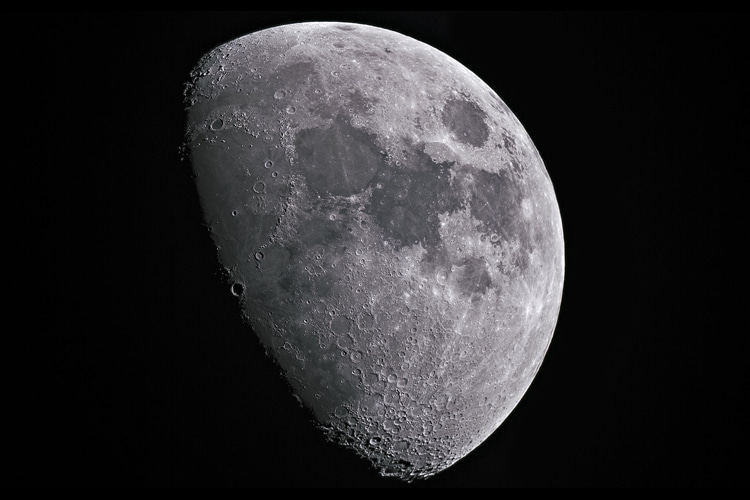The lunar cycle is the result of the interaction between the Sun, the Moon, and the Earth. Discover the eight phases of the Moon.
There are several myths and misconceptions about the Moon, its apparent brightness, and its phases.
For instance, the concept of moonlight is nothing but sunlight reflecting off the Moon's surface.
The Moon simply reflects the light of the Sun, and its bright part experiences daytime, just like any other planet in the Solar System.
Why? Because The Moon doesn't produce or emit its own light. The Sun is actually the only source of light in the solar system.
So, why does the Moon change shape throughout the month?
The Moon completes an orbit - or revolution - around the Earth in 27.32 days, similar to how the Earth goes around the Sun in 365 days.
As a result, the Moon sometimes finds itself hidden, partially hidden, partially lit, or fully lit up by the Sun, depending on whether it is blocked or not by the planet we live on.
The percentage of illumination also varies during each phase, ranging from zero percent during the new phase to 100 percent during the full phase.
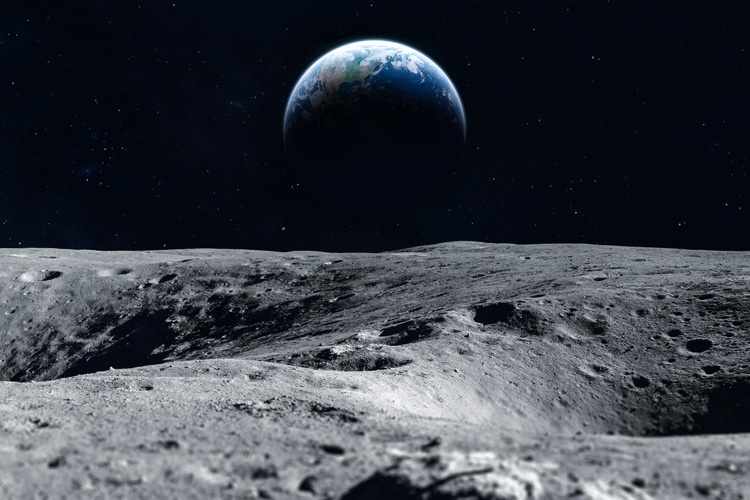
The Lunar Cycle
The lunar cycle takes 29.53 days - nearly a month - to complete, allowing us to see it changing and morphing from new moon to new moon.
Interestingly and not coincidentally, the words "moon" and "month" come from the same root.
So, it's our perspective of the Moon's sunlit appearance that changes as it orbits Earth.
But there are more interesting facts about the moon cycle.
Everyone on planet Earth sees the same phases of the Moon.
The only difference is that those who live south of the equator see the Moon "upside down" with the reverse side lit when compared to those located north of the equator.
Also, although the same side of the Moon is facing toward the Earth throughout the month, the Moon has no side that is constantly dark.
That is to say, there's no perpetual dark side of the moon.
Last but least, during new moons and full moons, the Earth gets more extreme high and low tides due to the combined gravitational pull of the Sun and Moon.

The Moon Phases
The Moon is not only visible at night. We often see it during the day.
The only phases that cannot be seen in the day are the new moon and the full moon.
From an astronomical perspective, the lunar cycle has four main phases and four intermediate phases.
Let's take an in-depth look at each one of the Moon phases in order:
1. The New Moon
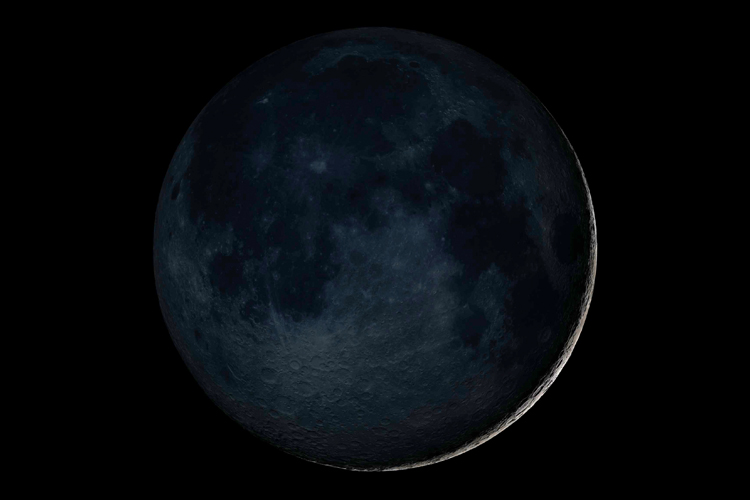
The cycle of the lunar phases begins with the New Moon.
At New Moon, the Moon appears to us on Earth completely dark and unilluminated because its unlit side is facing our planet.
According to modern astronomy, the new moon occurs when the Sun and the Moon are at the same geocentric ecliptic longitude.
In other words, the Moon is perfectly lined up between the Earth and the Sun.
As a result, the part of the Moon facing us appears dark and in shadow because we only see the side that is not lit by the Sun.
The new moon is the only moment in the lunar cycle when we can witness a solar eclipse, and it is the only time the Moon is between the Sun and the Earth.
2. The Waxing Crescent Moon
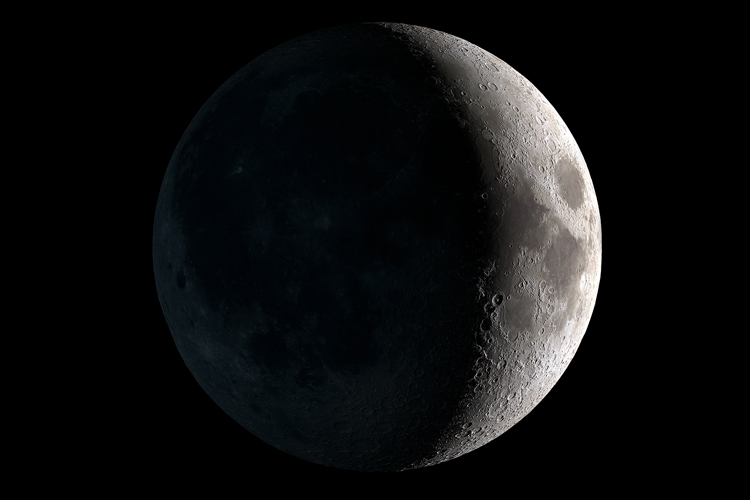
Once the Moon moves along in its orbit, we begin to observe its dayside.
The result is a thin slice of light resembling a nail. It's the waxing crescent, i.e., a growing crescent.
At this stage, the Moon appears to be less than one-half illuminated by direct sunlight, even though a fraction of its disk is increasingly lit by the Sun.
It can be seen toward the southwest in the early evening.
As the Moon starts to move eastward away from the Sun, we begin to witness more of its sunlit side each night.
As the days go by, the crescent moon grows fatter and fatter in the western evening sky.
3. The First Quarter Moon
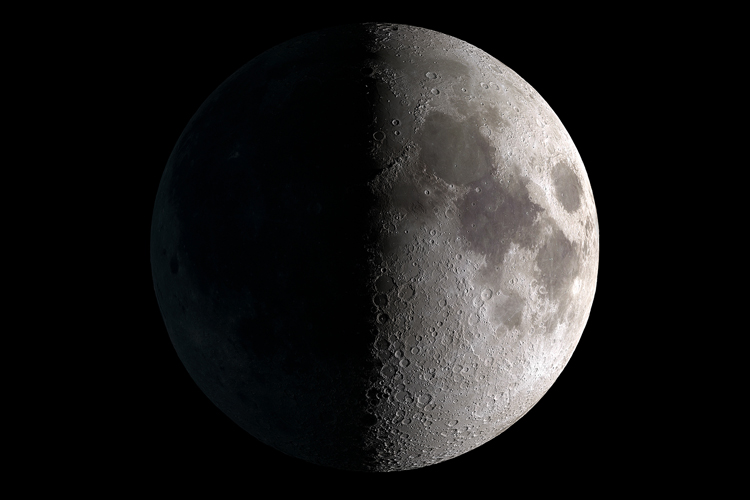
As it grows thicker, the Moon reaches a new phase in the lunar cycle.
The first quarter, commonly called half moon, appears to us as if half of the Moon is illuminated.
Nevertheless, the Moon is still between one-quarter and halfway through its cycle.
It is visible up high in the southern sky in the early evening.
The reason why it is called the first quarter moon is that it is one-quarter of the way through the lunar month.
4. The Waxing Gibbous Moon
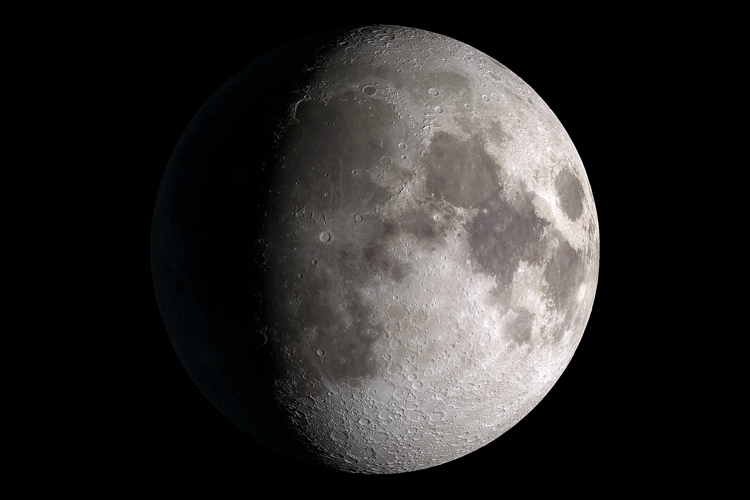
As days give way to nights, the Moon reaches another stage - the waxing gibbous.
Gibbous means "humped" or "swollen." By now, the Moon appears to be more than 50 percent but not exactly fully illuminated by direct sunlight.
Nevertheless, the moon's disk is already well-lit by sunlight.
It is visible to the southeast in the early evening, up for most of the night.
At this point in the lunar cycle, the moon continues to wax and grow fatter, illuminated by the Sun's rays.
5. The Full Moon

The full moon occurs when the Moon is completely illuminated by direct sunlight.
At this point, the satellite's lit-up side is symmetrically facing the Earth - visually speaking, it's the opposite effect of the new moon.
We can witness it rise almost exactly at sunset and high in the sky around midnight.
The full moon stays visible all night and sets as the Surf rises the next morning day.
One-half of the lunar month has been completed.
6. The Waning Gibbous Moon
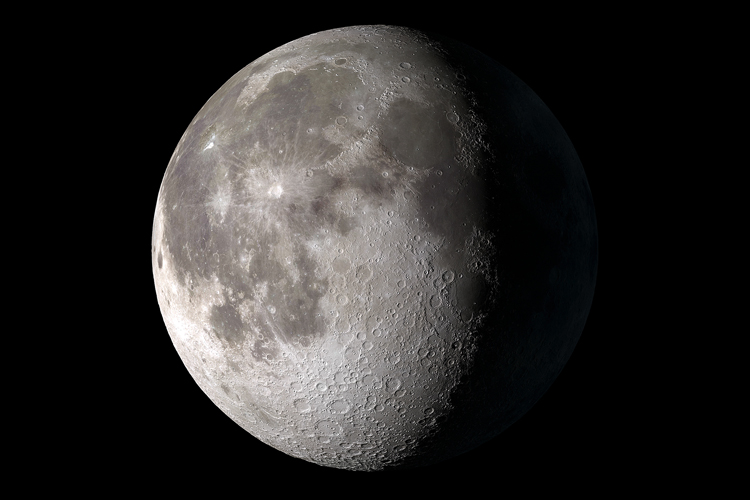
The full moon marks the beginning of the reverse process and the start of the second half of the lunar month.
At the waning gibbous, the Moon is no longer fully illuminated by direct sunlight, and its disk appears to be one-half lit up.
The Moon is growing thinner each night.
It can be observed rising after sunset, up high in the sky after midnight, and visible to the southwest after sunrise.
7. The Third Quarter Moon
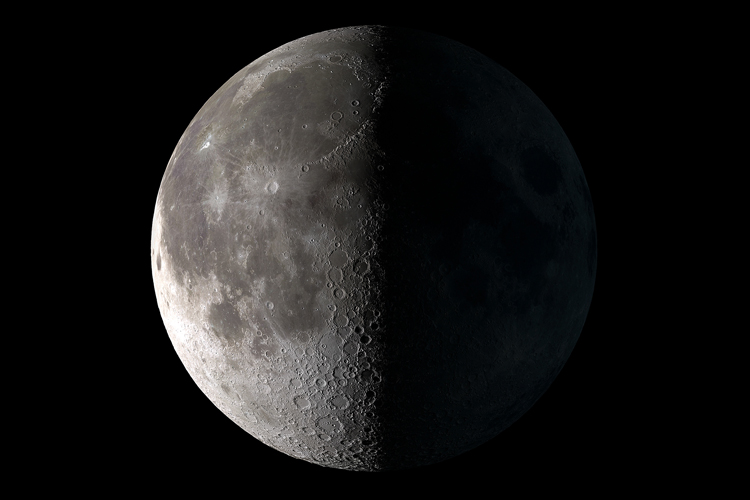
The third quarter moon reveals one side of the Moon's disc illuminated and the other side in darkness.
It's a mirror of the first quarter phase and can be witnessed around midnight and then to the south after sunrise.
At this stage, three-quarters of the lunar month has been completed.
8. The Waning Crescent Moon
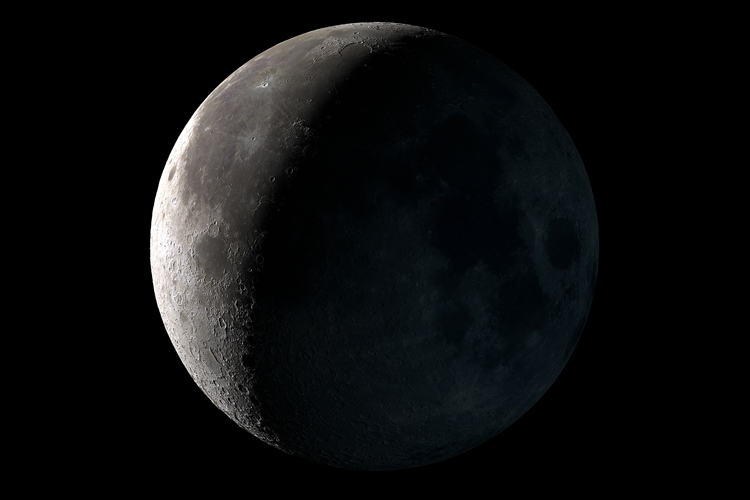
The waning crescent moon is the last phase of the lunar cycle.
At this point, the Moon is barely illuminated by the Sun, and only a fraction is lit up by direct sunlight.
It can be seen low to the east before sunrise.
The journey has been completed, and a new moon is about to hide under the darkness of the night skies.
Phases of the Moon: Moonrise and Moonset Times
Do you want to know at what time the moonrise and moonset take place?
The following table features approximate moonrise and moonset times.
It does not include the necessary corrections that should be applied to daylight saving time (DST), time zone, season of the year, atmospheric refraction, the shape of the horizon, and other relevant variables.
New Moon
6 am | 6 pm
Waxing Crescent
9 am | 9 pm
First Quarter
12 pm | 12 am
Waxing Gibbous
3 pm | 3 am
Full Moon
6 pm | 6 am
Waning Gibbous
9 pm | 9 am
Third Quarter
12 am | 12 pm
Waning Crescent
3 am | 3 pm
Moon Phase Calculator
The Moon is at an average distance of 238,855 miles (384,400 kilometers) from the Earth.
And when it comes to the lunar cycle, it's our view of the Moon that changes.
The Moon has a night side and a day side, just like the Earth.
The terminator, also known as the twilight zone, is the moving dividing line between night and day.
Do you want to know today's moon phase? Check the current Moon Phase Calculator:
